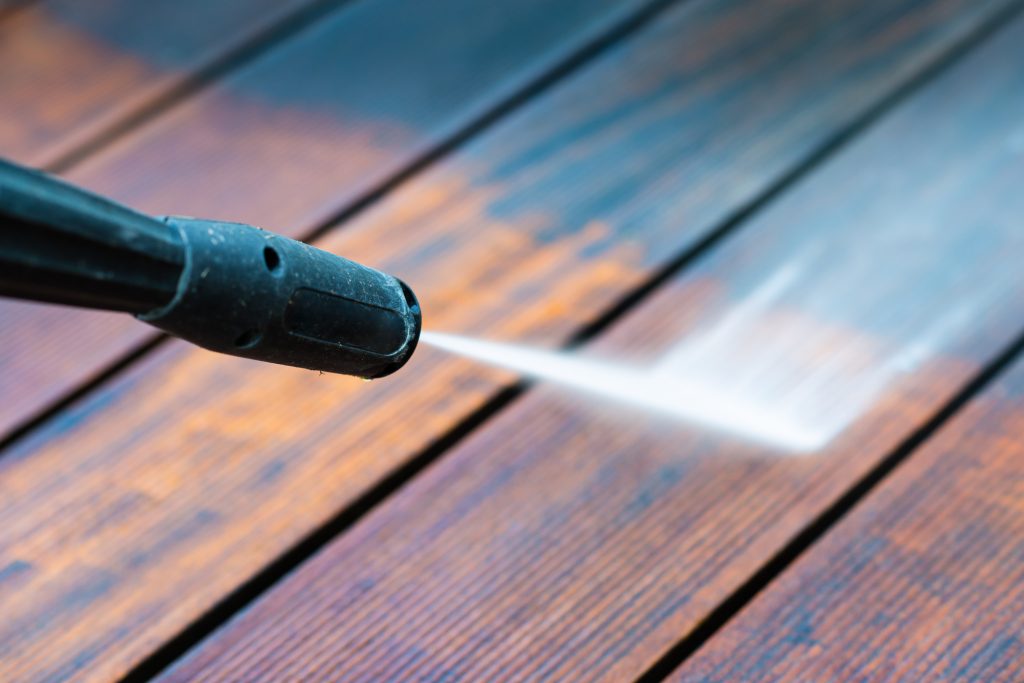Top Tips for DIY Pressure Washing
Wondering how to save money with DIY pressure washing?
You don’t actually need a professional to do the work for you. You can easily learn pressure washing on your own, and use these skills anytime you need to.
In addition to saving money, you’ll save yourself from the time and hassle it can take to find a good professional for the job.
In this guide, we’ll show you everything you need to know so you can pressure wash on your own. Keep reading to learn how to DIY pressure washing!
What is Pressure Washing?
You might never have thought about pressure washing your house before. However, this is an important part of home maintenance that you should add to your regular home cleaning routines.
Pressure washing uses a high-power stream of water to clean paint, dirt, salt, stains, and other debris from a surface. Pressure washing can also be referred to as “power washing,” but power washing is actually slightly different: this method uses hot water.
The heat makes the water a bit more effective at removing debris, but regular pressure washing can still make a big difference.
Many people use pressure washing to clean driveways, decks, sidewalks, and other outdoor parts of their home. Mold, salt, and mildew can all be removed using DIY pressure washing. This cleaning method can even get gum off of sidewalks!
If you’re working with surfaces prone to damage, like brick or masonry, you’ll want to choose pressure washing, since the heat can cause more wear and tear.
However, on surfaces like concrete, power washing can be a good choice. Either way, you can use DIY pressure washing to get your home’s exterior looking brand-new.
Types of Pressure Washers
Pressure washers have either electric or gas engines, which run a pump that pressurizes regular water from your hose to at least 1,000 lbs – sometimes more. The pressure is measured in terms of pounds per square inch, also known as PSI.
The water is forced out through a wand, giving a high-powered spray that can remove debris wherever you need to.
The higher the pressure is, the more thorough the cleaning will be. If you have a really tough cleaning job, you’ll want to look for a washer that has a higher pressure.
For most at-home jobs, a pressure range of 1,300 to 2,400 PSI works well. Pressure washers with electric motors have PSIs of 1,300 to 1,400 PSI. These work well for smaller or lighter jobs. You can use an electric pressure washer to wash your car, your grill, or the floor of your garage.
Electric pressure washers tend to be less expensive and quieter than gas-powered ones. They’re also more lightweight and easier to transport than gas pressure washers. A lot of electric washers have tanks where you can add detergent for extra cleaning power if you prefer.
Your other option is a gas-powered pressure washer. Gas-powered engines give you more water pressure – they can even go over 3,000 PSI. However, you’ll need a bigger supply of water to keep a gas pressure washer going: they need two to three gallons per minute.
If you have big pressure washing jobs, such as prepping a surface for paint or removing stain from a wood surface, a gas-powered washer is the way to go.
To Rent or Buy?
You can either rent or buy the equipment for your DIY pressure washing needs. The main thing to consider when making your decision is how often you’ll need to use a pressure washer.
Most machines for home use will run you a few hundred dollars or more. If you rent the washer for the day, it will run you about $75, but you’ll also get a more professional-quality machine than if you were to buy one.
You’ll also need to spend a bit of money on oil and gas for a gas-powered pressure washer, as well as on maintenance. To get your money’s worth for the purchase, you should use the washer about twice a year for the next several years.
If you don’t plan to use it that often, renting is the better choice. For example, if you only use pressure washing for spring cleaning once a year, it’s not really worth it to buy one.
Step-by-Step DIY Pressure Washing
Now that you’ve chosen the best machine for the task, let’s take a look at the steps you’ll need to follow to get your home clean.
1. Choose the Nozzle
Not every nozzle will fit every pressure washer. The nozzle’s size and the way it angles the water will affect the way the pressure washer works. With a small washer, there’s usually just one nozzle which can adjust to suit different tasks.
With larger, professional washers, you can change out the nozzle for different washing jobs. Adjusting or changing the nozzle can change the shape or strength of the spray you get. Changing the angle can help you reach different spaces for cleaning.
2. Stay Safe
Safety is a serious consideration when you’re DIY pressure washing. Since you’re working with water, you’ll need to take extra care that the water doesn’t come into contact with electricity.
Make sure to cover any cable boxes or outside lights with plastic. Make sure there aren’t any exposed electrical wires overhead.
While you’re power washing, you’ll likely be standing in water, so you need to be completely certain that the water won’t come into contact with electricity.
3. Find Water
You’ll need the right water supply to get the job done. Make sure you have a high-quality garden hose that can give you enough gallons per minute.
4. Start Washing
Once you’ve set up and prepped the area, you can start washing! Adjust the spray depending on where you’re cleaning, and avoid spraying delicate areas like windows or plants that could be damaged.
Will You Try DIY Pressure Washing?
DIY pressure washing is a great way to save money while keeping your home looking fresh. Pressure washing is easy, and it can even be fun and satisfying to see outdoor surfaces get beautifully clean.
In addition to pressure washing your home and car, there are many other DIY ways to take care of them: check out our DIY car care tips here.





